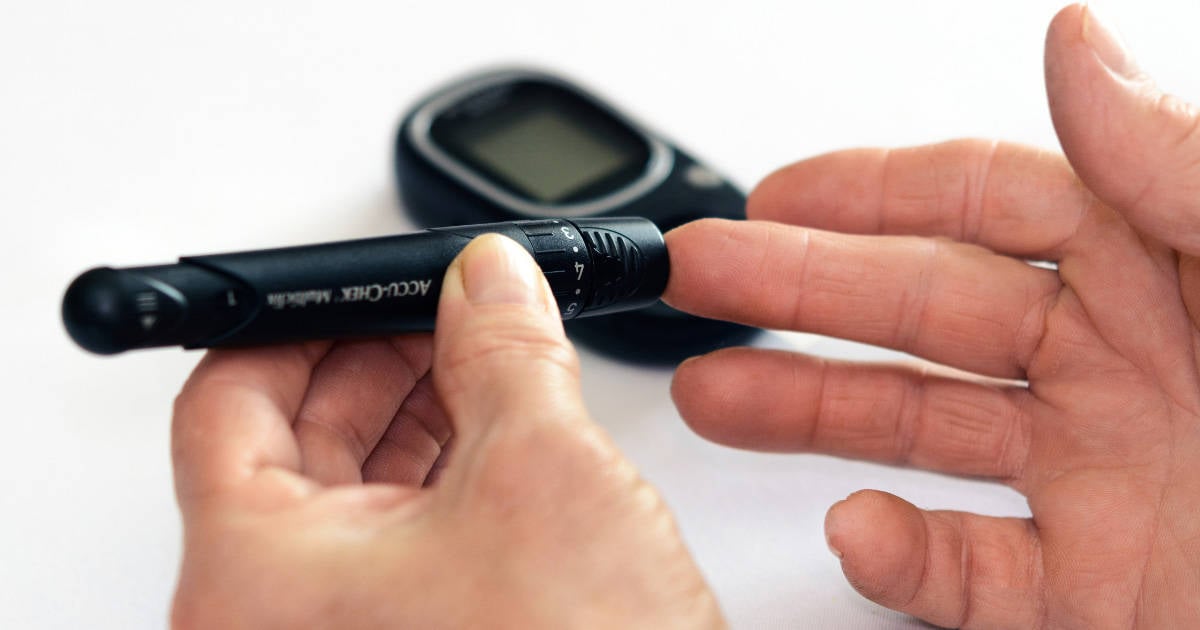You may have heard of type 1 and type 2 diabetes in the news and on social media, but how many types of diabetes are there really?
Turns out, there are many. This article will explain all of the different types of diabetes, how common they are, and how they’re treated.

What is diabetes?
It’s helpful to first define diabetes. According to the International Diabetes Federation, diabetes is, “a chronic disease that occurs when the pancreas is no longer able to make insulin, or when the body cannot make good use of the insulin it produces.”
in 2022, over 537 million people in the world live with diabetes, and that number is only slated to increase, especially in low and middle-income countries.
Diabetes, whether type 1, 2, or something in between, affects people of every age, color, and gender.
What are the general symptoms of diabetes?
- Extreme thirst
- Frequent urination
- Extreme fatigue
- Fruity taste in the mouth
- Blurred vision
- Slow-healing wounds
What are the most common forms of diabetes?
The three main types of diabetes are type 1 diabetes, type 2 diabetes, and gestational diabetes, which are explained below.
Type 2 diabetes
Type 2 diabetes is the most common type of diabetes in the world. The World Health Organization reported that as of 2015, over 400 million people were affected, which is about 90-95% of cases worldwide.
Type 2 diabetes develops when the pancreas begins to produce less insulin or when the body becomes less sensitive to the effects of insulin—known as insulin resistance. Type 2 diabetes is usually caused by a mix of genetics and environmental factors, such as diet and obesity.
The main therapy for type 2 diabetes is maintaining a healthy diet and regular exercise. However, over time people with type 2 diabetes eventually require either insulin or oral diabetes medication.
Type 1 diabetes
Type 1 diabetes can develop at any age but occurs most frequently in children and adolescents. Type 1 diabetes is an autoimmune disease in which your body produces no insulin.
The cause of type 1 diabetes is not completely known, but researchers point to both genetics and an environmental trigger, such as a virus, that causes the immune response to cause the condition.
Type 1 diabetes consists of fewer than 5-10% of all worldwide cases of diabetes. All people with type 1 diabetes require daily insulin injections to keep their blood sugars under control.
There is no cure for type 1 diabetes but several promising research studies for a cure are ongoing.
Gestational diabetes
Gestational diabetes is a type of diabetes caused by high blood sugars during pregnancy and can be associated with complications for both mother and child.
Roughly 8% of all pregnant women develop gestational diabetes, and the numbers have been increasing in recent years.
Gestational diabetes is a risk factor for developing type 2 diabetes later in life for both mother and child. Gestational diabetes is usually caused by a mix of genetics and environmental factors.
Gestational diabetes is not always treated with insulin; many times mothers can control their blood sugars with a healthy diet and exercise when pregnant, and gestational diabetes usually disappears after giving birth.
What are the lesser-known types of diabetes?
Only about 2% of people have other types of diabetes worldwide. These include different types of monogenic diabetes, cystic fibrosis-related diabetes, and diabetes caused by rare conditions.
Certain medications like steroids and antipsychotics can lead to other types of diabetes.
People with these types of diabetes can face challenges getting a correct diagnosis, and sometimes wait months or years for answers to their medical questions.
Latent Autoimmune Diabetes in Adults (LADA)
Latent Autoimmune Diabetes in Adults (LADA) is sometimes known as type 1.5 diabetes because the signs and symptoms of it seem to cross between both type 1 and type 2 diabetes.
This form of diabetes is almost always diagnosed in adults, between the ages of 30-50, and the symptoms come on much more slowly than type 1 (over the course of several months), but are more aggressive than the symptoms of type 2, with extreme thirst, frequent urination, and rapid weight loss being chief among them.
People with LADA often start out on oral diabetes medications such as Metformin and eventually transition over to insulin as their blood sugars elevate higher.
People with LADA graduate to insulin much faster than someone with type 2 diabetes ever would.
Mature Onset Diabetes of the Young (MODY)
Mature Onset Diabetes of the Young (MODY) is a rare form of diabetes which is different from both type 1 and type 2 diabetes, but is genetic and runs in families.
MODY is caused by a mutation in a single gene. If a parent has this gene mutation, their children have a 50% chance of inheriting the gene for MODY from them.
If a child inherits the MODY gene, they are likely to develop this form of diabetes before they turn 25, despite any lifestyle changes they may make.
MODY is often treated with oral diabetes medications or insulin, and some forms may not require any treatment at all. There are four types of MODY:
- HNF1-alpha. This gene causes ~70% of MODY cases. It causes diabetes by lowering the amount of insulin made by the pancreas. Diabetes usually develops in adolescence or early twenties, and usually does not need insulin to treat.
- HNF4-alpha. This is an extremely rare form of MODY. People who have inherited a change in this gene are likely to have had a high birth weight and needed glucose treatment at birth for low blood sugar. This form of MODY usually progresses to require insulin.
- HNF1-beta. People with this type of MODY tend to also suffer from renal cysts, uterine abnormalities, gout, as well as diabetes. This form of diabetes usually requires insulin.
- Glucokinase. This gene helps the body to recognize high blood sugars. When this gene is damaged, the body allows the level of blood sugar to continue to rise higher without consequence. Blood sugar levels in people with glucokinase MODY are typically only slightly higher than normal, which can lead to delayed diagnosis. This type of diabetes usually doesn’t require any treatment.
Neonatal diabetes
Neonatal diabetes is when diabetes is diagnosed before 6 months of age. It differs from type 1 diabetes in the sense that it is not an autoimmune disease.
Neonatal diabetes is caused by a change in the gene that produces insulin. There are two types of neonatal diabetes: transient and permanent.
Transient neonatal diabetes usually resolves before a baby turns one. This type accounts for 50–60% of cases. Permanent neonatal diabetes is a chronic condition and accounts for 40–50% of all cases.
Alström Syndrome
Alström Syndrome is a rare, genetically inherited syndrome that has a number of key features, including type 2 diabetes in youth.
Children with this syndrome exhibit severe insulin resistance and high blood fat levels, often requiring insulin injections for treatment.
Wolfram Syndrome
Wolfram Syndrome is a rare genetic disorder that is also known as DIDMOAD syndrome (Diabetes Insipidus, Diabetes Mellitus, Optic Atrophy, and Deafness).
Everyone with Wolfram Syndrome will develop one of these two types of diabetes at some point:
Diabetes mellitus: People with Wolfram Syndrome who have diabetes mellitus differ from type 1 diabetes because diabetes mellitus is not an autoimmune disease.
People with diabetes mellitus do not suffer from diabetes complications such as retinopathy or nephropathy.
Although it is treated the same way that type 1 diabetes is: with daily insulin injections, close monitoring of blood glucose levels, following a healthy diet, and exercising regularly. About 50% of people with Wolfram Syndrome develop diabetes mellitus.
Diabetes insipidus: This type of diabetes develops when the body can’t concentrate urine because the posterior pituitary gland isn’t making enough of the hormone vasopressin.
Symptoms of diabetes insipidus are extreme thirst and frequent urination. About 50% of people with Wolfram Syndrome develop diabetes insipidus.
Steroid-induced diabetes
Steroid-Induced Diabetes is a type of diabetes triggered by long-term corticosteroid use (usually 3 months or longer).
This form of diabetes is extremely rare and is often found in people who are already at elevated risk for type 2 diabetes.
Occasionally this form of diabetes is temporary, but sometimes the condition becomes chronic, with the need to take insulin or oral diabetes medication for life.
Type 3c diabetes
Type 3c diabetes is the result of another condition causing damage to the pancreas. Conditions such as pancreatic cancer, pancreatitis, cystic fibrosis, or even haemochromatosis (excess iron in the blood) can damage the pancreas enough to trigger this rare form of diabetes.
People who are in extreme accidents, and suffer trauma to their stomachs may also damage their pancreas and suffer from type 3c diabetes as a result.
This requires insulin injections similar to type 1 diabetes.
Brittle diabetes
Brittle diabetes is a form of type 1 diabetes that is notoriously difficult to control. Often called Labile diabetes, people suffering from brittle diabetes usually experience frequent, extreme swings in blood sugar levels, causing hyperglycemia or hypoglycemia on a daily and even hourly basis.
This rare form of diabetes is more common in females than males and tends to occur in young adulthood.
It is treated similarly to type 1 diabetes, with a special focus on close blood sugar management, with continuous glucose monitor (CGM) use highly recommended to catch both high and low blood sugars before they become dangerous.
Brittle diabetes is often associated with stress, depression, and other mental health issues.
What are the complications of diabetes?
While complications can vary between people, common complications, over time, include:
- Heart disease and stroke
- Retinopathy and in worst cases, blindness
- Skin infections
- Neuropathy
- Nephropathy (kidney disease)
- Lower leg amputations
- Heightened risk of developing Alzheimer’s disease
Pregnant women who have poorly controlled gestational diabetes may face these complications:
- Preeclampsia
- Miscarriage or stillbirth
- Birth defects
- Heightened risk of developing type 2 diabetes later in life (both mother and child)
How can you prevent diabetes?
There is no way to prevent most of the forms of diabetes, although you can lower your risk for type 2 diabetes by:
- Maintaining a healthy weight
- Eating a healthy diet
- Exercising regularly
- Avoiding cigarette smoking
Listen to your body. If you feel that you have been misdiagnosed with a form of diabetes that isn’t fitting your symptoms, or you feel that your needs are not being met, call your doctor immediately and seek a second opinion.
There are many lesser-known forms of diabetes that require alternative treatments, and you deserve the best possible care to maintain a healthy and complication-free life!




Tom Becker
I have CIADM ( Checkpoint Inhibitor Acquired Diabetes Mellitus). I was treated with Immunotherapy for cancer and the treatment knocked out my pancreas, thyroid and adrenal function. I am being treated for Type 1 but no serious studies are available for this type of diabetes.
If you have any input- it would be much appreciated,
Carol Marshall
There is another diabetes link: simvastatin. 38% of adults taking statins run the risk of insulin resistance, and diabetes. No research has been done to determine if stopping simvastatin reverses diabetes. https://www.ncbi.nlm.nih.gov/pmc/articles/PMC4926726/